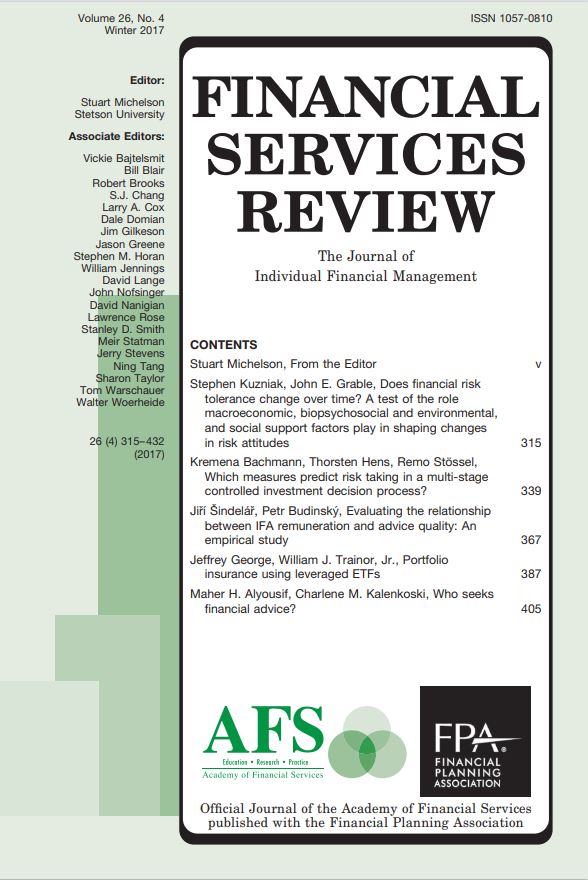Does financial risk tolerance change over time?
A test of the role macroeconomic, biopsychosocial and environmental, and social support factors play in shaping changes in risk attitudes
DOI:
https://doi.org/10.61190/fsr.v26i4.3370Keywords:
Change in risk tolerance, Social support, Macroeconomic indicators, Financial risk toleranceAbstract
Financial planners work in an environment that requires the documentation of a client’s financial attitudes and preferences. Financial risk tolerance is one such attitudinal construct that is generally required by regulators to be evaluated. While there are numerous commercial and academic products used to assess client risk attitudes, questions have been raised over the past several decades regarding the stability of scores from risk-tolerance tools. Specifically, financial planners, as well as regulators, require evidence documenting to what extent risk tolerance changes over time, and if changes do occur, the variables associated with variability. The purpose of this study was to address these needs. Based on a model that included macroeconomic indicators, biopsychosocial and environmental factors, and measures of social support, it was determined that risk-tolerance attitudes remain generally stable over time. However, there are groups of test takers that exhibit significant shifts in risk tolerance. This article describes some of the variables associated with these score changes, as well as providing financial planning professionals with guidance on how to identify clients who may be prone to shifting their tolerance for financial risk.
Downloads
Published
How to Cite
Issue
Section
License
Copyright (c) 2017 Academy of Financial Services

This work is licensed under a Creative Commons Attribution-NonCommercial 4.0 International License.
Author(s) retain copyright and grant the Journal right of first publication with the work simultaneously licensed under a Creative Commons Attribution-NonCommercial 4.0 International License that allows to share the work with an acknowledgment of the work's authorship and initial publication in this Journal.
This license allows the author to remix, tweak, and build upon the original work non-commercially. The new work(s) must be non-commercial and acknowledge the original work.


